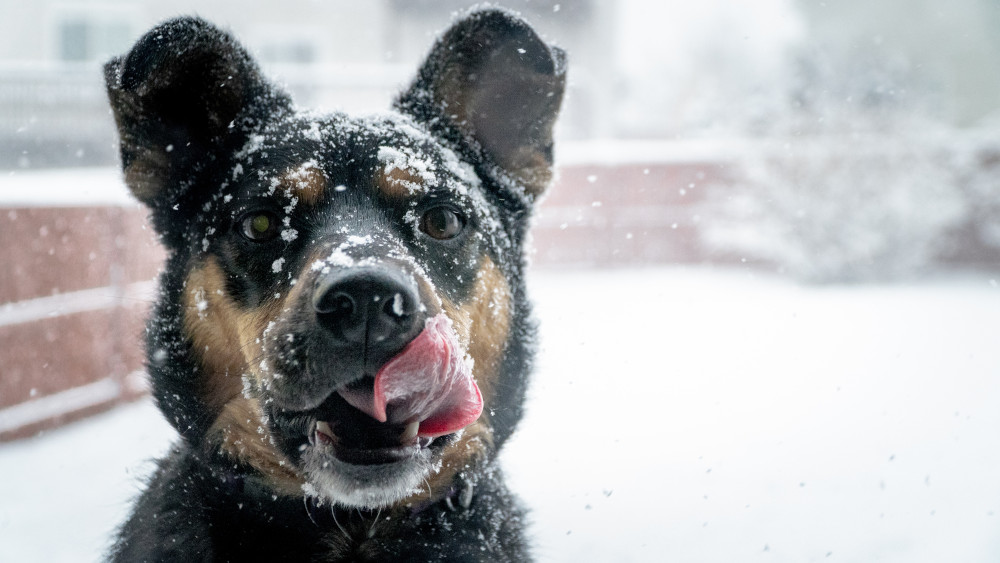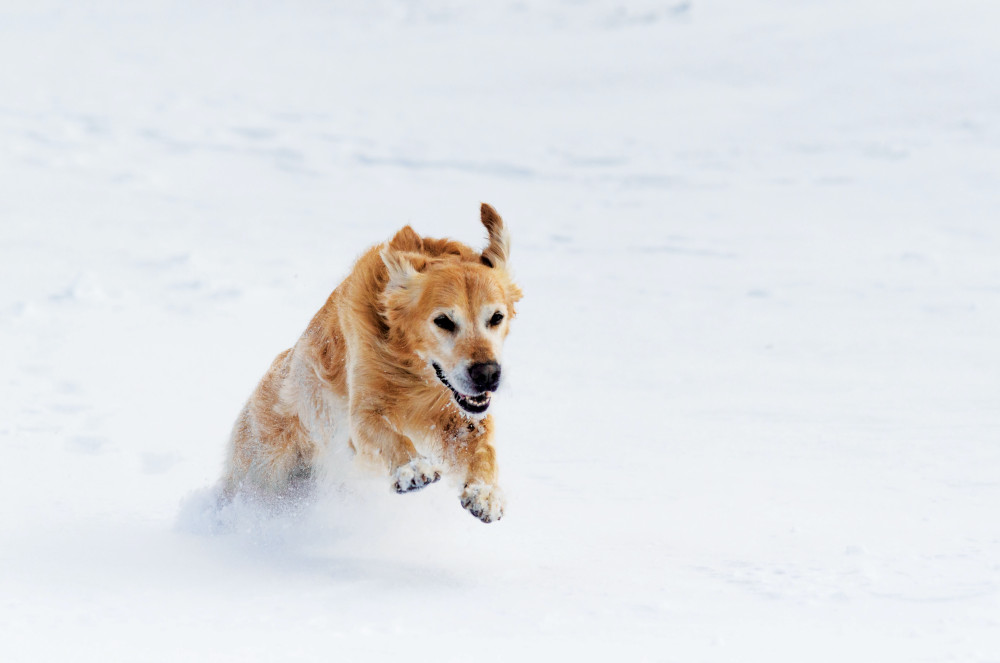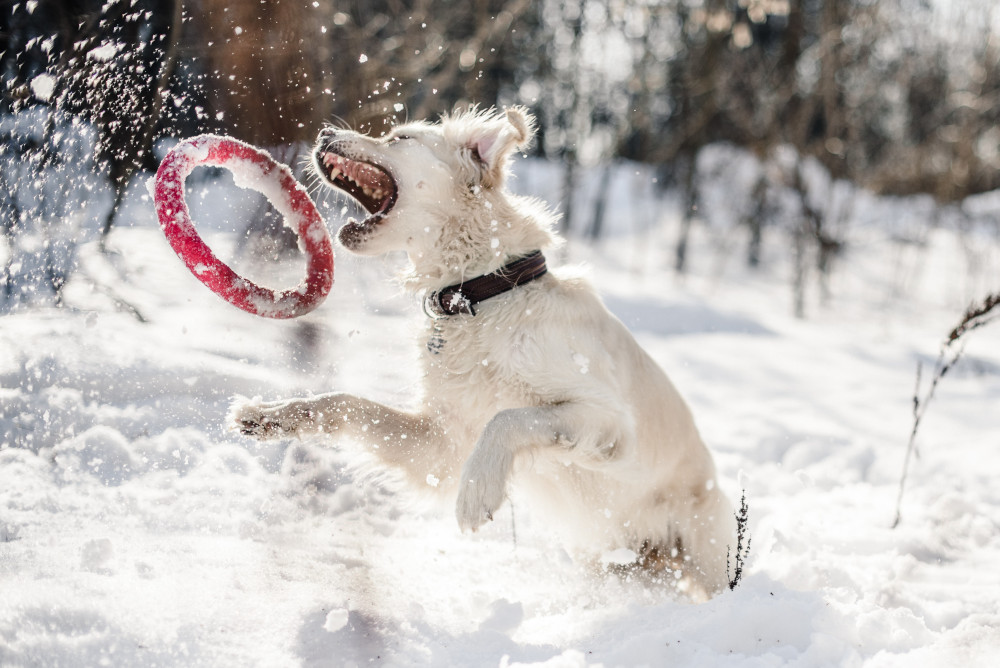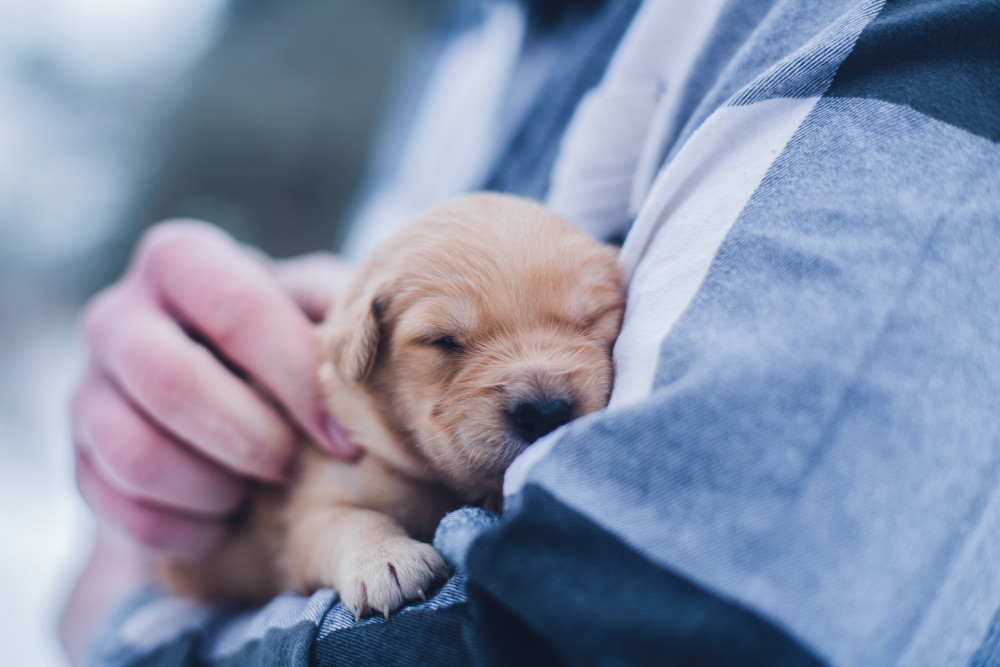
“Snow can be a very exciting time for dogs, especially those who haven’t seen it before. However, whilst taking them out for their usual daily exercise can be tempting, there are some essential things to consider to enjoy the chilly temperatures safely!”

Right now, many parts of the UK are experiencing below-zero temperatures. The general rule of thumb is if it’s too cold for you to walk outside, it’s likely too cold for your pup.
Popping out in the garden to do their business is fine, but if weather conditions are below freezing, try to walk them once the temperature rises above 0 again.
When you head out, try limiting their time in the snow. Most healthy dogs will be safe to enjoy the frosty weather, but factors like breed and age do come into play. Puppies and smaller breeds have less fat and may struggle to regulate body temperature. Older dogs or dogs with pre-existing health conditions are also at higher risk in the winter months.

Healthy medium to large breeds should be able to have about 30 minutes of exercise in the snow without experiencing any discomfort. Limit time for smaller and short-haired breeds to around 15-20 minutes.
If you can, avoid roads, pathways and driveways with grit salt. If it gets into their paws, it can cause irritation and discomfort, especially if it becomes compacted with snow. Be sure to wipe their paws as soon as you get in, especially if you think your dog has walked on grit before they attempt to clean themselves.
Salt grit contains harmful chemicals and, if ingested, is extremely hazardous and in some cases can cause sodium toxicity, so stick to parks and rural locations instead.
Whilst it can be tempting to let your dog run free in the snow, it’s best to keep them on a leash or long line. Snow can be disorientating for our pups – sadly, more dogs get lost during winter. Keeping them on a leash will reduce the risk of them running onto frozen lakes, falling, slipping or ingesting anything harmful that’s been covered in snow.

It’s also essential that your dog is microchipped and wearing a tag with your contact information before heading out. Reflective or hi-vis collars and jackets will also help you keep track of your pooch.
Dogs have more natural insulation thanks to their fur coats. Some breeds, like Huskies and New Foundlands, are well-suited to the colder weather, but many breeds will benefit from an extra layer of warmth in the snow. Protective booties can also be used outside for smaller or more sensitive breeds.
Be sure to dry your dog as soon as you get in and inspect their paws, bellies and ears for any icy patches that may have formed in these areas. Dry them thoroughly with a towel and ensure their bed or crate is in a warm area of your home so they can dry off and get comfortable as quickly as possible.

It’s vital to keep an extra eye on your dog in the colder months, particularly their body language. Look out for shivering, lethargy and stiffness in their legs. If your dog experiences any of these symptoms, call your vet immediately.
Whilst walking is a great way to stimulate your dog mentally, there are plenty of indoor activities you can try that will provide mental enrichment and strengthen your bond. Activities like training sessions, playing, scent work and treat puzzle toys will work their mind and body and help tire them out.